The art of the Artist Blacksmith is based on the ancient principles of hot forging iron and steel, working with a fire, a hammer and an anvil. Forging provides a means of shaping and joining metal that invests it with a special quality and character, far removed from the mechanical qualities of cut and weld fabrication. But blacksmiths today do more than simply hammering. It is part of their business to visit clients, survey sites, discuss design ideas, provide individual design proposals and make drawings, in addition to making, finishing and installing the work. New methods like computer aided design, sophisticated welding and cutting systems, and power hammers have added to the capabilities of modern blacksmiths, but not compromised the hand skills that lie at the heart of the craft.
OK! But where to find these skilled artist blacksmiths, working in the traditional style???
Today I want you to meet the brothers Steven and Brecht Dujardyn of the company DUJARDYN ARTCONCEPT, based in Oostrozebeke, Belgium.
These people are real artisans!! They continue the work of their blacksmith ancestors, the smiths of the village Oostrozebeke, West-Flanders, already evoked since the 17th century.

Steven (left) and Brecht at work.
The smithcraft was already structured since the 12th-13th century. The crafts were professional organisations that guaranteed the perfect quality of their fellow’s handiworks. There was the organisation of the copper-smiths, brass-founders, iron and tin artisans, lock-smiths, bell and gun founders and even goldsmiths.
The industrial revolution of 1750 saw to it that most of the rural smiths “modernized” and that new agricultural tools in metal, such as the ploughshares, were manufactured. The horses were still shod of course, but the wheels of the farmer’s carts possessed henceforth their iron fitting too.
Brecht in the ‘heat’ of the fight!
From the 2nd half of the 18th century on was noble ironwork essentially considered as being purely constructive and functional.
During the last decades, the number of smiths was strongly decreased since the potential market in the constructive and the functional (we might say utilitarian) has also decreased because of the disappearance of more and more farmers. So suddenly we resorted again to the aesthetic, artistic and decorative function of ironwork.
Steven at work.
One of the frustrations of the brothers consists in the fact that they realize that actually, professional secrets died with entire generations of smiths. They assure that they have to ‘reinvent’ many things. Not any master-smith of the Middle Ages of Late Middle Ages has ever written a “Manual of Ironwork”, or this one would have been lost over the centuries. The craft was transmitted from the ancient to the young, while forging.
Both, Steven and Brecht aren’t afraid of picking up inspiration by the last ancient smiths. Each little bit of transmitted science is for them a welcome piece of the puzzle.
“We are a little autodidacts”, they say, “and the one practising a craft of art like us, keeps on learning his entire life”.
The brothers working on a railing.
After Steven and Brecht had attented all possible trainings in Belgium, each in his scope, they had a few years ago the unique fortune to improve their knowledge at the prestigious ECOLE INTERNATIONALE DE LA FERRONNERIE FRANCAISE in Muizon, near Reims. A unique opportunity for our two Flemings, to know that the “school” only admits ten pupils a year, among which two strangers! Brecht could attend there the practical course and Steven the theory.
The work of blacksmiths covers an extraordinary range, both in scale and application. Blacksmiths today are making gates, railings and staircases; sculpture for city centres, private homes and gardens; chairs and tables, doorknockers, light fittings and hinges; bowls, bottle openers; jewellery etc.
Isn’t this staircase that Steven and Brecht made just gorgeous?!
 An ‘Art Nouveau’ styled staircase.
An ‘Art Nouveau’ styled staircase.
 An escutcheon.
An escutcheon.

 A chandelier with Swarovski crystal.
A chandelier with Swarovski crystal.
Steven and Brecht show us on their website also a lot of beautiful hardware as doorknobs, hinges, locks and keys,…
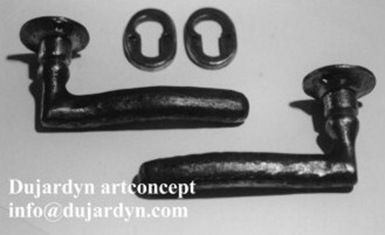
I might think that so far, you will have a good idea of what our artisans are capable to! Isn’t it stunning!
In 2006, Steven and Brecht attended the ‘6ième Symposium de la forge Européenne’ in France. They were given lessons by blacksmiths of different nationalities. And they were asked to make a window bar in the tradition of the 16th century.
The Dujardyn brothers are also member of the BABA ( British Artist Blacksmiths Association), an organisation that aims to share the knowledge, experience and fellowship that is neccesary to maintain and forward the decorative art of the blacksmith.
Congratulations to you, Steven and Brecht! We are proud of having such an artisans amongst us, Belgians!
Keep on practising this wonderful art!
If you want to know more about Dujardyn Artconcept, please visit their website www.dujardyn.com. Don’t hesitate to contact Steven and Brecht, they will be pleased to help you with your project.
Dujardyn Artconcept
O.L. Vrouwstraat 3
8780 Oostrozebeke
Belgium
Tel . 0032 (0) 56 66 23 61
I wish you a wonderful week!
xx
Images and text source : the Dujardyn Artconcept website & the Baba website



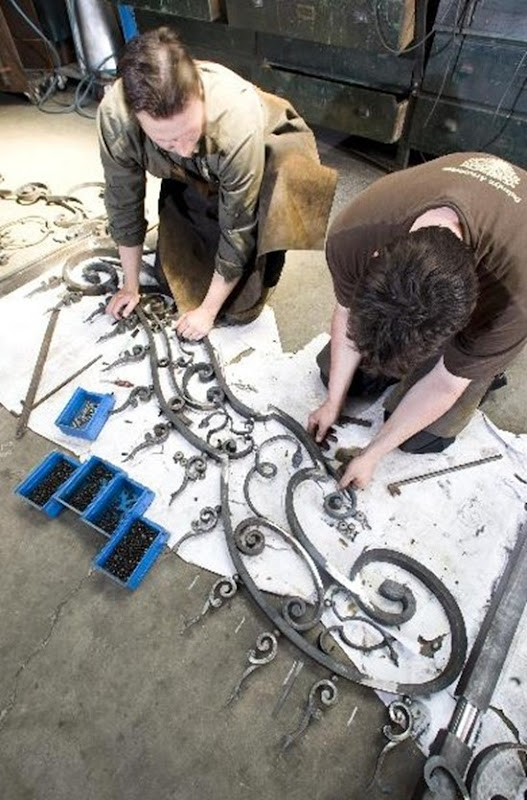




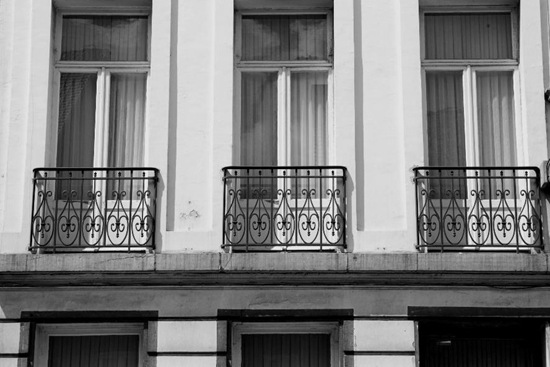

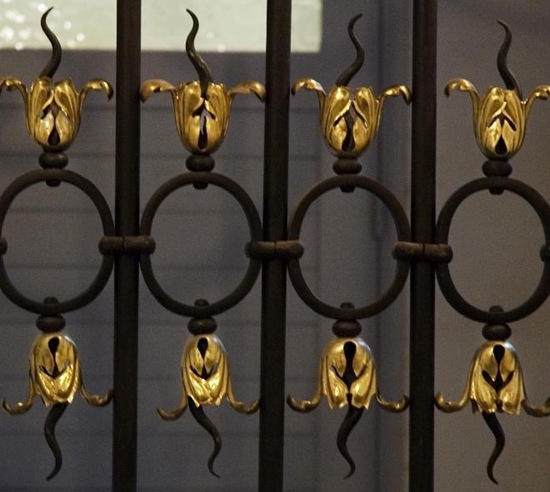
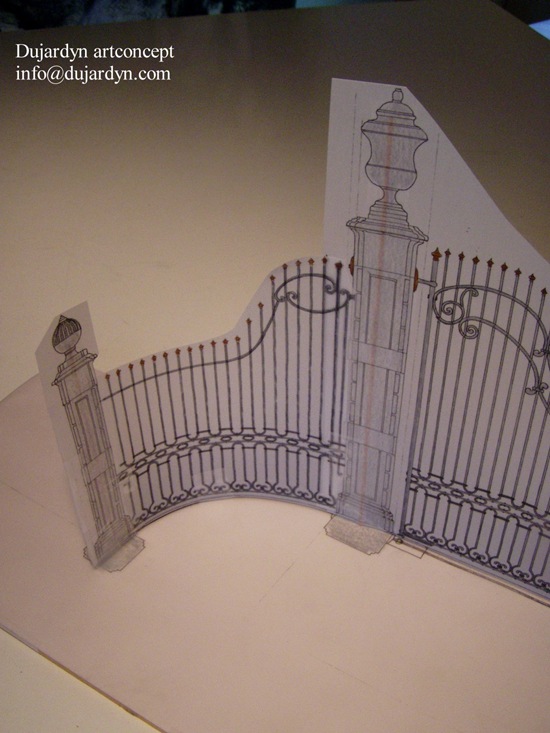
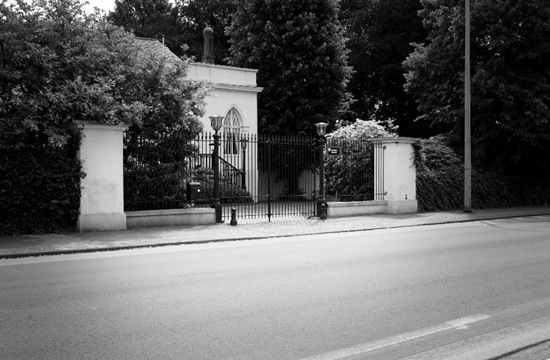


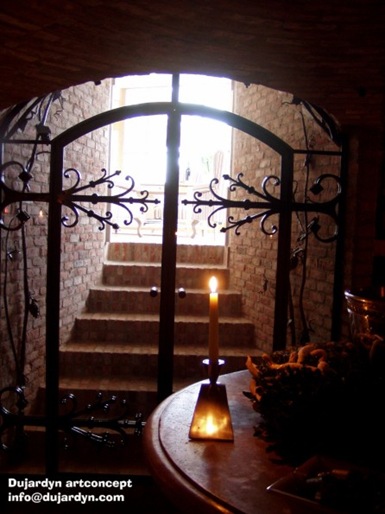










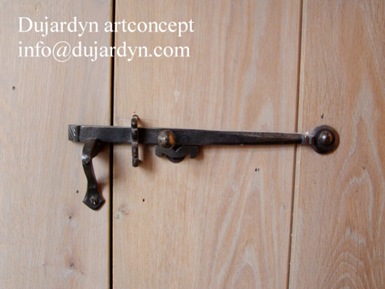
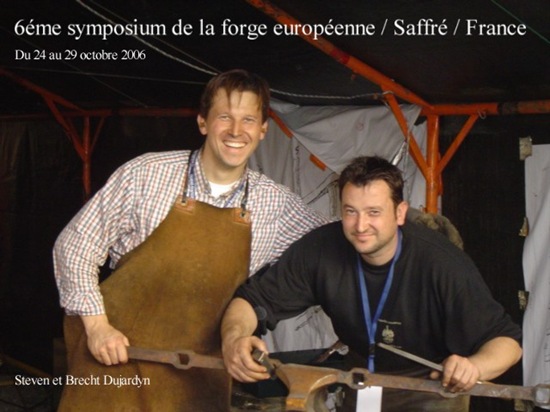
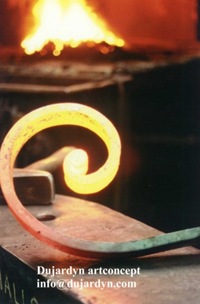
No comments:
Post a Comment